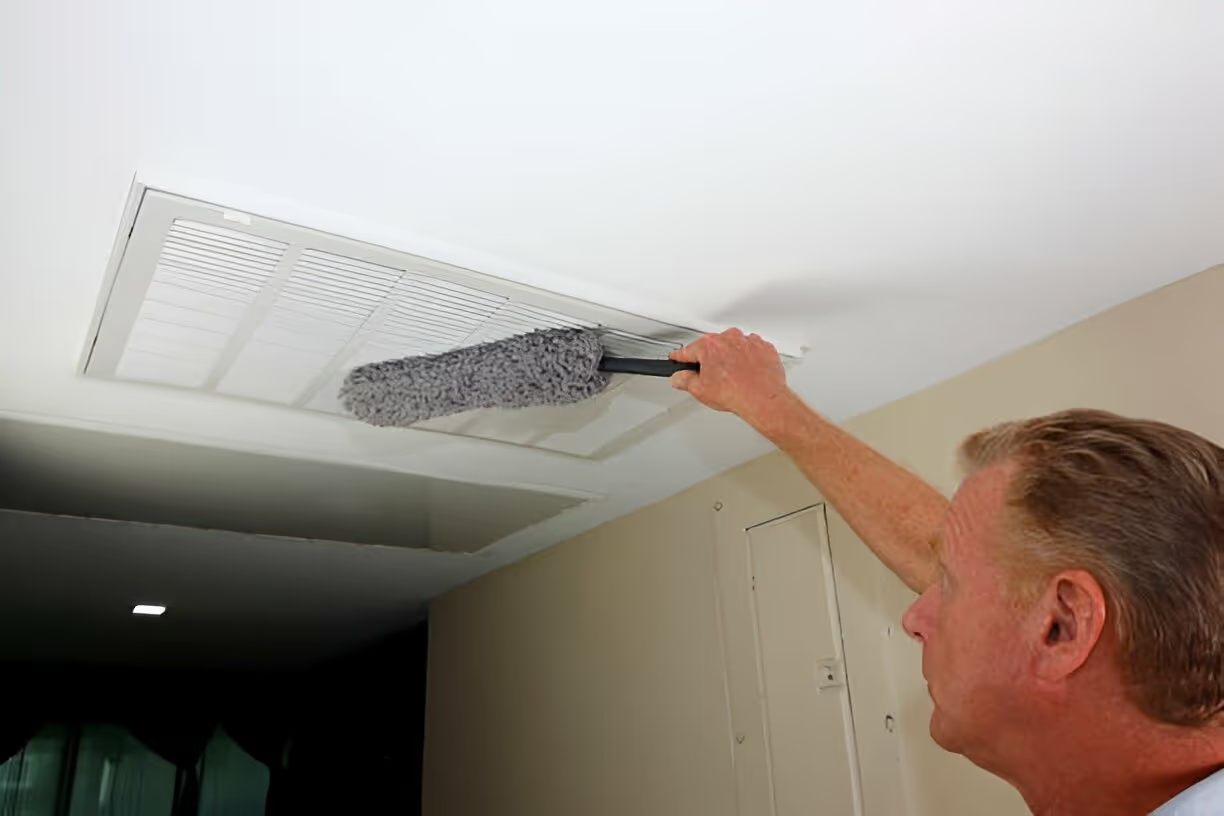Ductwork in Lakeland, FL


Common ductwork problems in Lakeland, FL
- Leaky joints and seams allowing conditioned air into unconditioned attics and crawlspaces, increasing cooling loads.
- Poor insulation in attic or rooftop ducts leading to heat gain and reduced cooling capacity.
- Imbalanced airflow causing uneven temperatures between rooms, often with distant bedrooms staying hot.
- Flexible duct damage or collapse in tight spaces that restricts airflow.
- Mold and microbial growth in ducts due to high humidity or standing moisture.
- Corrosion or mechanical damage in ducts exposed to coastal air or storm-related debris.
Design and new installation
A well-designed duct system starts with a load and distribution plan that matches the home’s layout and HVAC capacity. In Lakeland, this includes accounting for high cooling loads during long, hot summers and designing for proper humidity control. Key design elements:
- Accurate sizing using Manual D principles to ensure airflow and static pressure are within equipment limits.
- Duct placement that minimizes runs through unconditioned attics or provides insulated, sealed routes.
- Return air strategies that ensure balanced pressure and effective circulation.
- Material selection appropriate for local conditions (sealed sheet metal for main trunks, insulated spiral ducts for long runs, properly sized flex for connections).
New installation services include layout planning, duct fabrication, secure hanging, and code-compliant terminations and registers.
Repairs, sealing, and insulation
Sealing and insulating ducts are often the fastest way to reduce cooling bills and stabilize indoor comfort. Common interventions:
- Leak diagnostics using pressure testing and visual inspection to locate gaps at seams, takeoffs, and boot connections.
- Mastic sealant or code-approved foil tape applied to joints and connections for long-term airtightness.
- Adding or replacing insulation on ducts in attics or garages; options include foil-faced fiberglass, duct wrap, or insulated rigid ducts to reduce thermal transfer.
- Replacing damaged flex duct and repairing collapsed or crushed runs to restore proper airflow.
- In Lakeland homes, attic insulation and airtight ductwork are especially important to prevent warm, humid attic air from overwhelming the system.
Airflow testing and balancing
Airflow testing and balancing ensure each room gets the right volume of conditioned air. Services include:
- Measuring supply and return flows with an airflow hood (balometer) or anemometer.
- Static pressure and differential measurements with a manometer to assess system resistance.
- Adjusting dampers, adding balancing dampers, or resizing trunks and branch runs to achieve target cfm per room.
- Verifying equipment operates within manufacturer specifications for airflow and static pressure.
- Balanced ducts reduce hot/cold spots, lower compressor runtime, and improve humidity control—critical for Lakeland’s climate.
Retrofits to improve efficiency and reduce noise
Retrofits can modernize older duct systems without full replacement. Typical upgrades:
- Replacing undersized or noisy flex with insulated, rigid duct trunks to cut noise and friction losses.
- Installing acoustic liners or internal insulation to reduce HVAC noise transmitted through ductwork.
- Adding transfer grills or jump ducts to improve pressure relief and circulation in remodeled homes.
- Converting leaky attic runs to conditioned space runs or relocating equipment where feasible to reduce heat gain.
- These retrofits improve comfort and often extend HVAC equipment life by reducing strain.
Materials and code considerations
Duct materials and installation must meet Florida Building Code and local Polk County requirements. Important considerations:
- Use of fire-rated materials and proper firestopping where ducts penetrate fire-rated assemblies.
- Insulation R-values appropriate for the region and installation location to minimize thermal losses.
- Proper sealing methods that meet code and industry standards for duct tightness.
- Corrosion-resistant materials or coatings in areas prone to salt air or moisture exposure.
- Following code ensures safety, performance, and reduced risk of future rework during inspections or resale.
Cleaning and sanitizing options
High humidity and intermittent AC use in Lakeland can encourage dust and microbial growth in ducts. Cleaning and sanitizing services include:
- Inspection to determine contamination level with visual assessment and, when necessary, microbial testing.
- Professional vacuuming and agitation to remove settled dust, debris, and pests.
- Coil and plenum cleaning to improve heat exchange efficiency and remove potential mold sources.
- Application of EPA-registered sanitizing agents or antimicrobial treatments when contamination is confirmed, used judiciously and in compliance with health guidelines.
- Regular cleaning intervals depend on household factors like pets, renovations, or past contamination; targeted cleaning improves indoor air quality and system efficiency.
How inspections and diagnostics work
A professional duct inspection typically includes:
- Visual inspection of accessible runs, boots, and returns.
- Pressure testing (duct blaster) to measure leakage percentage and locate problem areas.
- Airflow measurements at registers to identify balance issues.
- Thermal imaging to detect heat gain/loss along duct runs in attics or crawlspaces.
- Moisture and microbial assessment when humidity or musty odors are present.
- This diagnostic approach pinpoints the most cost-effective fixes tailored to a Lakeland home’s layout and climate challenges.
Long-term benefits and maintenance advice
Proper ductwork work leads to measurable benefits: improved comfort consistency, lower monthly cooling bills, longer HVAC equipment life, reduced noise, and better humidity control—important in Lakeland’s humid environment. Maintenance recommendations:
- Inspect ductwork annually for visible damage or disconnected joints.
- Schedule airflow testing and balancing after major HVAC work or home renovations.
- Re-seal and re-insulate attic ducts when replacing attic insulation or installing new HVAC equipment.
- Clean ductwork when there is visible contamination, persistent odors, or after water intrusion events.
- Timely attention to ducts protects indoor comfort and reduces the risk of mold growth and system inefficiency in central Florida conditions.
Proper ductwork in Lakeland, FL, is not a luxury; it is essential to keep cooling systems running efficiently and homes comfortable year-round. Thoughtful design, careful installation, targeted repairs, and scheduled maintenance address the particular challenges of our climate and housing stock, delivering durable performance and healthier indoor air.
Service Areas


